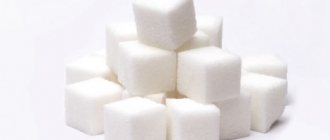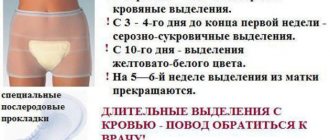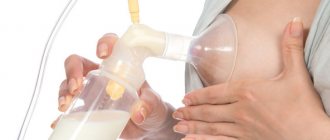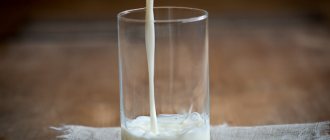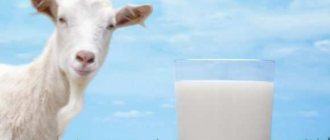Everything flows, everything changes: why breast milk is very different, and what it depends on
Here are six unusual transformations that happen to breast milk.
Milk changes as baby grows
Immediately after the birth of a child (or even shortly before it), a woman produces colostrum - a dense and viscous liquid that contains many components that strengthen the newborn’s immunity. Secretory immunoglobulin A is responsible for strengthening the immune system, which protects the baby’s fragile body from the effects of external harmful factors, says certified lactation consultant Taya Griffin.
According to Griffin, colostrum contains fewer nutrients such as lactose or fat, but more protein and potassium, which is ideal for a newborn baby's body.
A few days after birth, colostrum is replaced by milk (sometimes also called transitional milk). After a couple of weeks, transitional milk turns into mature milk: - it still contains a lot of nutrients and immunoglobulin, but its volume differs significantly from the volume of colostrum.
The next age-related change in milk occurs in the second year of lactation, when the baby turns into a toddler. Milk becomes smaller (because the baby begins to eat different foods more often), it becomes denser, and the amount of antibodies and fat in it increases to match the growing load on the baby's immune system.
Milk changes during growth spurts and illnesses of the baby
The basic composition of mature milk remains approximately unchanged throughout the entire feeding period, but the amount of its individual components may vary depending on the needs of the child. Teresa Pitman, one of the founders of La Leche League, notes that during growth spurts, the baby begins to eat more often, causing the mother's milk to become fattier and more nutritious.
In addition, scientists are convinced that breast milk changes its composition during a child’s illness. By coming into contact with the baby’s saliva, the mother’s body “reads” information about the child’s health status and “adds” antibodies specific to a particular disease to the milk. Sounds almost incredible, right?
Milk changes depending on the time of day
According to breastfeeding experts, the composition of milk changes even throughout the day, with many women reporting increased breast milk production early in the day, in the early morning. Towards evening, milk becomes denser and contains more serotonin and other substances that help the baby calm down and fall asleep faster.
Milk changes during feeding
Even during one feeding, milk changes its composition (very clearly shown here). First, the baby receives thinner, so-called “fore” milk, and then thicker and more nutritious “hind” milk. Foremilk satisfies the baby's first hunger and gives him the strength to suck thick hindmilk, which is necessary for growth and development.
Milk changes color
We are accustomed to the idea that milk should be white, but breast milk can have a wide range of shades. Lactation consultant and nurse Etty Sandink says normal breast milk can be bluish, yellow, cream, or even orange.
Colors of milk to be concerned about: Pink, red or rusty orange - these may indicate blood in the milk. Moreover, blood can indicate both a nipple injury and more serious problems, for example, a breast tumor.
Milk changes taste
A number of studies have shown that the food a breastfeeding woman eats affects the taste of her breast milk. According to a 2008 study, the taste of menthol lasts the longest in breast milk, but the taste of a banana can only be felt by a child for an hour after eating it.
A 2001 study found that children of mothers who drank carrot juice for a long time later preferred carrot flakes to regular carrots.
Also, the taste of milk depends on its composition: colostrum has a salty taste, and after ripening the milk becomes sweeter and “honey” in taste. Expressed milk has a “soapy” taste.
Read more on the topic
4 myths about breastfeeding and maternal breasts
Meat juice and malt soup: what and how they replaced breast milk in Russia at the end of the 19th century
Unexpected questions (and answers) about breast milk
Bakery…
You might be surprised at how many baking recipes you can use sour milk. Pancakes, pies, biscuits - all this can be prepared with milk that has expired. You can also replace sour milk with yogurt, curdled milk, and sour cream, which are indicated in the recipe.
Japanese scientists pollinate plants using soap bubbles
Spanish schools do not conduct rulers
Dinner in 30 minutes - recipe for cooking potatoes with vegetables in the microwave
Homemade cheese
You can make homemade cheese or cottage cheese using sour milk. To do this, heat the milk over low heat until it curdles—that is, until the whey separates and a dense lump forms. Then strain the milk through a sieve. You can salt the milk mass, add herbs and spread it on sandwiches or eat it with jam, like cottage cheese.
Four-year-old Misha set a record for extreme cycling
The owner taught the dog to play Jenga. The dog's skill is enviable: video
My new bedroom in country loft style. Calm shades and a sea of light
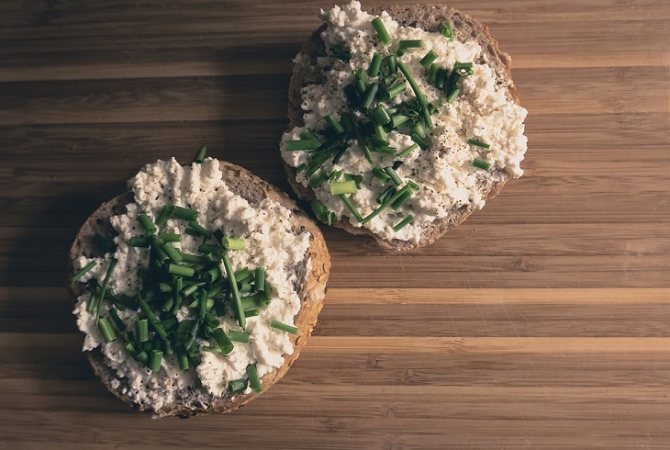
Factors affecting quality
- Nutrition. If one of the family members is allergic to any foods, then the mother needs to be extremely careful in adding them to her diet or eliminating them completely. A baby prone to allergic reactions will most likely react negatively to nuts, eggs, berries, chocolate, honey, and citrus fruits in the mother's diet. A nursing mother should consume all food groups so that the nutrition is balanced and the baby receives all the vitamins and microelements he needs with milk.
- Beverages. Occasionally, a mother can drink a little coffee or wine, but it is necessary to understand that some of the caffeine will enter the child’s body. The process of lactation causes an increase in the amount of fluid needed by the body. To avoid dehydration, a woman should drink more than usual, but she should not do this forcefully, because excess fluid will not affect the amount of mother’s milk, and the quality of the milk may deteriorate.
- Presence of stressful situations and proper rest. A nursing mother should get a good night's sleep and avoid noisy companies or crowded places. Try not to participate in conflict situations, disputes, and be less nervous. Excessive physical activity reduces the amount of beneficial proteins and vitamins in milk.
- Taking medications. The instructions for all medications must include information about the possibility of using this medication during lactation, since some medications can suppress it. In any case, before starting to take medications, it is better to consult a doctor, and for the mother to carefully monitor the behavior and health of the baby. Most drugs affect the child's body only during the first two months of life, and then children become less susceptible to drugs that pass into breast milk.
- Ecology. The presence of toxins in mother's milk sharply reduces its quality. Therefore, a nursing woman should avoid smoky places and areas with large concentrations of cars. You should not eat foods grown in urban areas or near the road, as most likely they contain significantly higher levels of heavy metals. For the same reason, you should not eat fish caught in polluted waters, or mushrooms collected in a city park. It is necessary to avoid inhaling vapors of solvents, varnishes and paints, gasoline (while refueling the car, you should get out of it and step aside), use nail polish remover and nail polishes as little as possible.
- Women's health. The condition of the breasts and the general condition of a woman’s body affect the quantity and quality of milk produced. Illnesses accompanied by high temperatures can lead to “burnout” of milk and cessation of lactation.
Read also:
Weaning from breastfeeding: how to make it painless and safe for mother and baby
Basic principles for removing milk stains
Before removing stains from milk and ice cream, it is necessary to study the product care recommendations and fabric composition on the label.
And follow the following rules:
- Do not use water above 40°C. The protein found in goat and cow milk will curdle when exposed to high temperatures, making the task more difficult.
- Do not use aggressive substances (bleach, chlorine-based products, acids, alkalis) on delicate fabrics
- Treat the stain gently and gently, without pressure or rough movements.
- Clean from the edges of the dirt to the center
- Act from smaller to larger, i.e. start with weak cleaning agents and move on to stronger ones
Removing milk marks using chemical-based products
It's a shame to throw away a damaged item. The dyes and fatty components included in modern dairy products aggravate the situation.
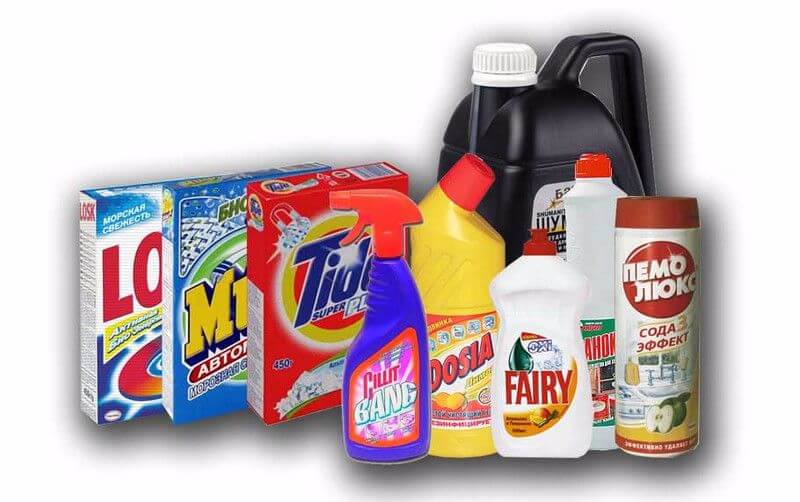
Removing stains using chemicals
Then chemical stain removal methods come to the rescue:
- You need to start with the simplest thing: to clean colored things, you need to take 10 grams of glycerin, a tablespoon of warm running water and a few drops of ammonia. Treat milky contamination with the composition. After waiting for it to dry, iron the product over cotton fabric.
- Old stains from cow's milk and ice cream can be removed with gasoline soap. The dirty mark is thoroughly treated with soap and rinsed with running water.
- One teaspoon of ammonia mixed with 10 grams of warm water will remove stains on white clothes. Before using the product, it is necessary to conduct a test on a small area of clothing. Ammonia has a pungent odor, therefore, after treatment, it is recommended to wash the product in a washing machine using fabric softener
- If you have turpentine soap and ammonia at home, you can prepare an effective remedy for cleaning damaged items. A quarter of the soap is grated, mixed with a few drops of ammonia and rubbed into the soiled textiles. Next, the product undergoes a thorough washing with powder
- Stain removers such as Vanish, Freken Bock, and Luxus are suitable for removing dirt from milk and ice cream. To make things presentable, just follow the instructions on the packaging
ARTICLE FOR YOU
How and with what to wash and remove tar stains from clothes at home
Insufficiently knowledgeable people start cleaning things with gloved hands. Spraying cleaner outside of the stain may cause streaks.
To avoid this, it is recommended to use the method of spot application to small areas: pipette, enema; Large areas should be treated from the edges to the center with a sponge or brush. The area around the contamination must be treated with gasoline, starch or talcum powder. This will protect the item from the spread of dirt and stains.

Washing stains by hand
How to improve fat content?
- You can improve the quality of milk by including vegetables, fruits, cereals, cottage cheese, fish, liver, and lean meat in your diet.
- You should eat 5-6 times a day, about half an hour before feeding.
- Special herbal preparations for lactation, which can be purchased in pharmacies or prepared independently, will help improve the amount of milk and its fat content.
Read also:
When does milk usually start coming in after childbirth and is it possible to speed it up?
If there are any problems or doubts regarding the quantity or quality of breast milk, a woman should seek advice from a breastfeeding specialist. The experience of friends and acquaintances may not always be effective in solving the problem, and sometimes it can even harm lactation or the health of the baby. A nursing mother should not independently diagnose herself or prescribe additional medications. In order for the process of feeding a baby to be long and effective, issues of improving quality and quantity should be approached very responsibly, because it is mother’s milk that lays the foundation for the future health and development of the child.
